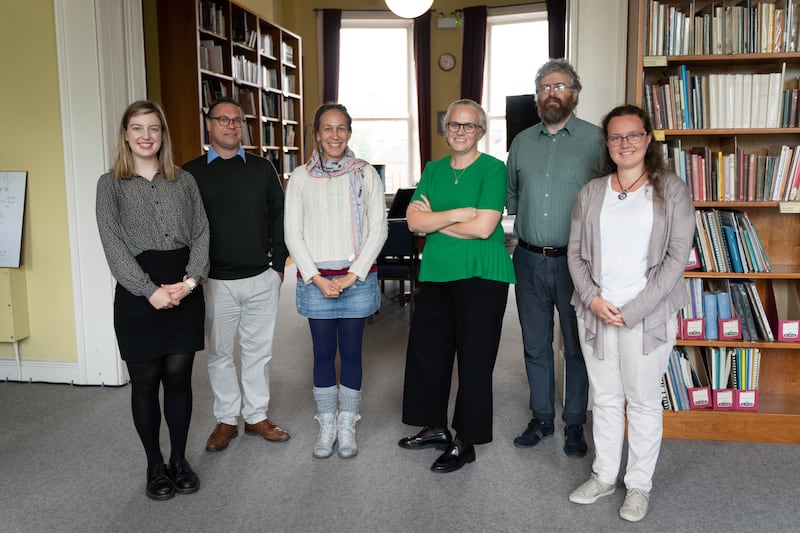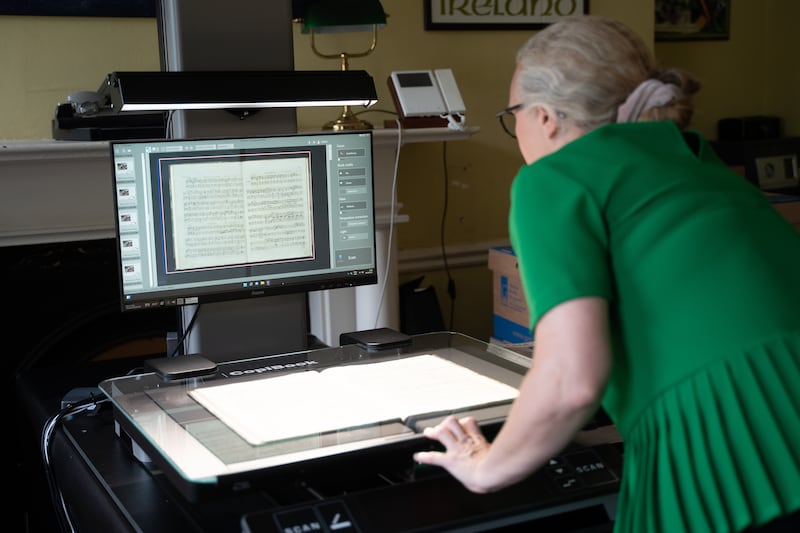Of all the wonderful things about music, one of the most amazing is the way it communicates without words. The right tune can get people’s feet tapping and move them to dancing or even weeping; those same notes can speak to someone on the other side of the world, or even across time. Music also carries stories, which is why the Irish Traditional Music Archive (ITMA) is such a treasure trove.
First set up by Harry Bradshaw and Nicholas Carolan in 1987, the archive’s initial aim was to protect the historic sound recordings of Irish traditional music that were discovered while the duo was producing their RTÉ radio series, The Irish Phonograph. Today their base at 63 Merrion Square is the destination of choice for artists, academics, researchers and even TV and film production companies wanting to check the accuracy of their planned soundtracks.
“Sometimes people phone up and start to sing a song down the line, asking if we recognise it. We’re like a Shazam for trad”
“Yes, we recently worked with the team on The Banshees of Inisherin,” confirms ITMA archivist Maeve Gebruers in reference to the recent Martin McDonagh film with Colin Farrell. “Brendan Gleeson is very interested in our older recordings,” she adds of the movie’s co-star. “Then there was Black 47 and…” she continues, laughing, “Wild Mountain Thyme. They were on to us about the origins of the song.” It’s actually a toss-up as to whether it’s Scottish or Irish, and you can learn all this, and more, at the archive.

Musicians come in too, looking to learn more about the tunes that may have come their way. An extensive catalogue usually yields results. “It’s nearly an embarrassment now to say a tune is gan ainm (nameless),” says Gebruers. You do not have to be in the business either. Sometimes people phone up and start to sing a song down the line, asking if they recognise it. “We’re like a Shazam for trad,” she smiles.
READ MORE
The ITMA welcomes visitors, and who wouldn’t want to explore the collection? There is vinyl (and a turntable to play it), reel-to-reel collections (now digitised), more than ten thousand CDs, and scores and scores of (what else?) musical scores. There is also a growing collection of field recordings, and even some instruments. “We are not a museum but, that said, of course people have given us instruments, and we don’t turn them away.
“Innovation has always been central to Irish music. We recently did a New York project, where we made available recordings going back to the 1890s”
“We have a walking stick flute that was purported to have been owned by Oliver Goldsmith, but I’m not sure if that’s true,” says Gebreurs. ”And a beautiful fiddle that belonged to a Traveller. It was made from an orange crate. When a fiddle player comes in, we get them to play it. Instruments should be played!”
Hugely enthusiastic and passionate, Gebreurs describes how Heritage Council support has enabled the purchase of archival materials, as well as a state-of-the art scanner, so that our precious musical heritage can be kept safe even as it is used, cherished and passed down through the generations.

The ITMA also champions the idea of tradition being a fluid, developing thing – it can look forward at the same time as it preserves the past. While some of the team is out on the road, or in the in-house studio, capturing the music and stories of Irish musicians for posterity, others are working with contemporary musicians to explore the archives.
Often it’s about the conversations as much as the music. “Paddy Moloney was in, just months before he passed away,” Gebreurs says of the late Chieftains legend. “These people have so much to say. Their stories, the history, who they learned from, who they played with. You’re discovering that lineage.”
Meanwhile, and with a fresh episode each month, the Drawing From The Well video series, the brainchild of director Liam O’Connor, has so far included sessions with Louise Mulcahy, Martin Hayes, Edwina Guckian, Mary Bergin and Tony Linnane, Brían Mac Gloinn, Radie Peat, Cormac Begley, Caitlín Nic Gabhann, Daoirí Farrell, Steve Cooney, Aoife Ní Bhriain, Aoife Granville, Conor Connolly, Mairéad and Deirdre Hurley, Jesse Smith, Lisa O’Neill and Laoise Kelly – all looking at the Archive to make new work.
The eclectic and intriguing results of the fruits of these sessions are to be found on the ITMA’s social media channels, while a recent ITMA National Concert Hall event also featured artists from the project.
“Innovation has always been central to Irish music,” says Gebruers. “It has always been rich and varied. We recently did a New York project where we made available recordings going back to the 1890s, to the beginnings of recorded sound, and we looked at what they were doing. Tommy Potts, the Bothy Band, it was all there,” she says, of the threads that run through tradition and innovation.
“These people have so much to say. Their stories, the history, who they learned from, who they played with. You’re discovering that lineage”
The ITMA also has a huge online, searchable database, although as Gebreurs points out, copyright means that not everything can be available online. You can also visit by appointment for free. itma.ie.
Softer than bagpipes, and played seated unlike their more warlike brethren, the uilleann pipes are up there with the harp as one of the most strongly powerful aural symbols of Ireland. But did you know that although they date back to the 1700s, the pipes only got their name in the 20th century? Or that even though they became Ireland’s first piece of intangible cultural heritage, inscribed into the records of UNESCO in 2017, they had all but died out just over a generation ago?
Joining such things as Tango in Argentina, Chinese Shadow Puppetry, and Avalanche Management in Austria on the UNESCO records means that the uilleann pipes must be protected by the Government, should they ever come close to extinction again. This had happened back in 1970, when legendary piper Leo Rowsome died.
“He was the last full-time maker of the pipes in the world,” says Gay McKeon, director of Na Píobairí Uileann, the group who were critical in driving the UNESCO ratification. “Until we set up, there were more makers outside Ireland than in.” McKeon got to know Rowsome via his father. “He was a builder and joiner, he became besotted with the sound of the pipes, and he befriended Leo. He helped to source timber for Leo to make them.”
Describing Rowsome as a “magical teacher”, McKeon sees alchemy in the work of sharing these beautiful instruments and their music. “It is such an expressive instrument,” he says. “It’s in the tonal qualities, there’s a draíocht (magic). When I was a young lad, there were about 20 people playing the pipes. Now we have members in 40 countries and we teach in more than 30 locations around Ireland.”
No doubt inspired by such greats as Liam O’Flynn, Finbar Furey and Paddy Moloney, as well as the popular strains of Riverdance, more and more people are flocking to the pipes. “You can play from about eight years old. You have to have the finger span,” McKeon explains. And even though it takes a full month to make a set, Na Píobairí Uileann have set up a scheme that loans pipes to hopeful players.
“You can be any age,” he says. “You pay €100 a year, and we ask that you get regular tuition. I love hearing young people playing, having the opportunity to experience them.” Now, Na Píobairí Uileann is working on getting the support to reinstate the building next door to their own HQ at 15 Henrietta Street. “We want to put a visitor’s centre in and move our instrument making and training in from Clonshaugh. It would be great for cultural tourism,” he says.
International Uilleann Piping Day takes place on November 5th. pipers.ie













